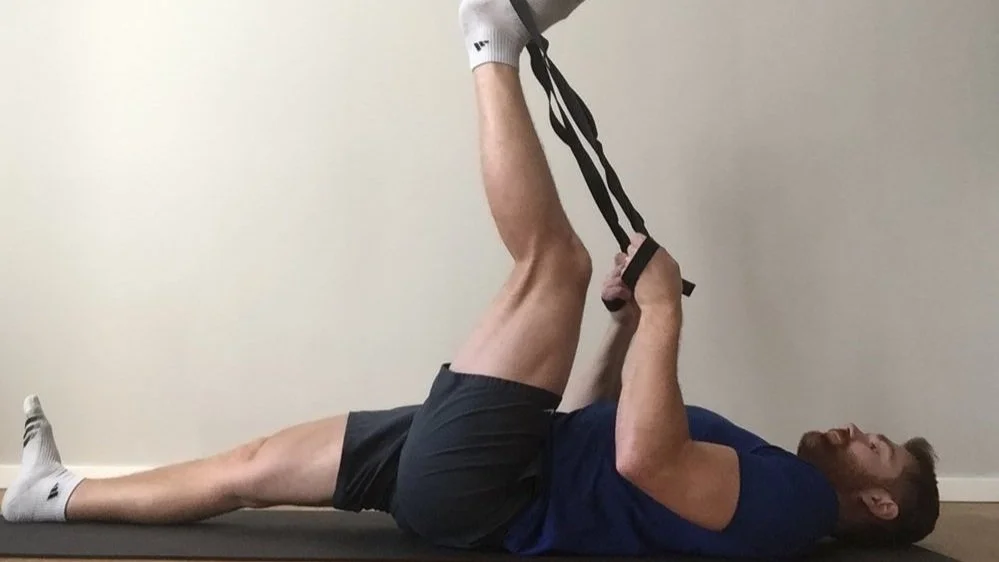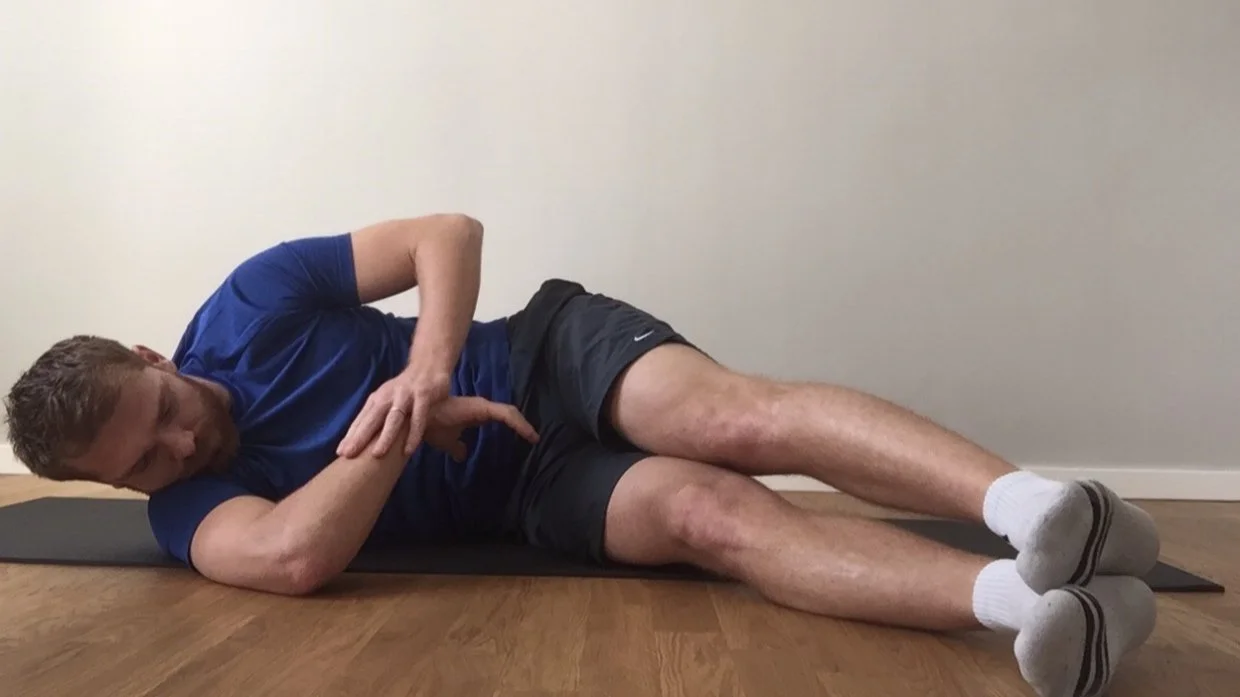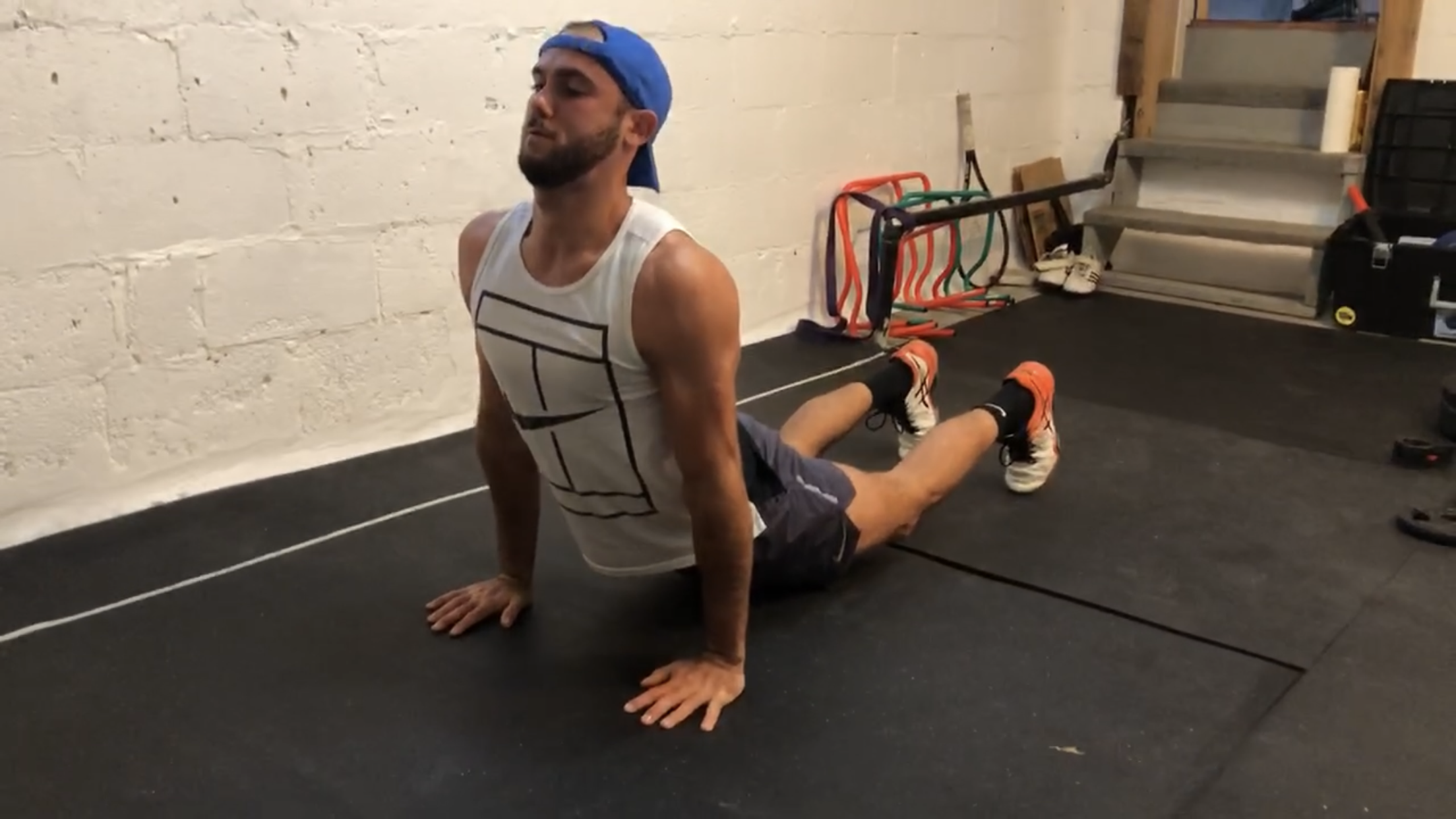Warm-Ups
When it comes to warm-ups, there are 2 categories - general and specific.
General Warm-Up
The general warm-up is divided into 4 components (see video below for detailed exercises, number of reps etc):
#1 - General Movement - I recommend jogging but using a stationary machine (ex: bike), can also be utilized. As long as we’re increasing body + muscle temperature and upregulating the system for training.
#2 - Dynamic Mobility - these are movements that help us gain / restore range. If you have mobility restrictions, you may add other activities if desired.
#3 - Court Movements - here, we perform various locomotive movements (ex: side shuffling, butt kicks etc). The aim is to start gradually ramping up the intensity.
#4 - Ballistic Flexibility - these are swinging / rotating type movements that place unique velocity demands on muscles + joints. Because our body will be going through highly explosive actions, these act as a bridge from the warm-up, to the main activity.
Note - #1-4 should only be performed prior to tennis, plyometrics and sprints. #1-2 should be performed prior to weight training / gym sessions. If you’re combining gym with sprint/plyos, you’ll do all 4.
Specific Warm-Up
The specific warm-up is divided into 3 parts. These are NOT mandatory but encouraged for high-level players (except for #3 - starting all tennis sessions at slower paces + ramping up is an
#1 - Ballistic Flexibility - these are similar to the ballistic movements we described above, but they involve the upper-body; on top of that, it’s best to utilize a plyo ball as this can help accentuate certain ranges of motion.
#2 - Plyo Ball Movements - here, we’ll be throwing a light plyo ball (either 500g or 1000g), at submax intensities; it’s a way to ramp up the tennis shoulder for striking.
#3 - On-Court Warm-Up - in the video below, I am showcasing warm-up serves (these are done a submax levels, ramping up to higher intensities with each serve); that said, if you’re playing tennis, this would be light hitting prior to any drilling / playing begins.
Note - these ONLY need to be performed prior to serving / tennis.
Stretching
On the stretching side of things, the aim isn’t to become a contortionist but some stretching / activities that will help increase range of motion are likely beneficial for:
Increased flexibility
Decreasing soreness / tightness
Potential better expression of elasticity
Having said that, there are examples of servers that are not very flexible (Kyrgios comes to mind), yet they still produce a ton of power. Serving is unique in that there are various ways a player can achieve racquet speed. I have typically not trained very many tall players - most are in the 5’10” to 6’0” range with only a couple at about 6’1” / 6’2”. Because of this, I needed to devise strategies that would help these players increase serve speed. Increasing strength, power and flexibility (in a more general sense) were ways that we could achieve some of these changes.
Here are a few target areas to include during your stretching protocols. If you’re already flexible and you’re someone who can easily gain range, my suggestion is to restore range (rather than aiming to increase it further). To do this, you probably don’t need to stretch each area for more than 30-60s.
If, on the other hand, you’re not very flexible and you believe that increases in range are important for you and your game, each stretch should be held for a minimum of 60s and can go up to 2-3min (or more in some cases). Or, you could perform 2-3 sets of 60s of each. Alternating between upper body and lower body stretching is a good strategy (remember, stretching places a stress on the target tissues like any other form of training, so recovery is needed for adaptations to take place).
Isometric contractions can also be beneficial for those that want to speed up the process. Below are my detailed guidelines for static and isometric stretching:
Stretching Routine 1: Passive Stretching
Primary Aims: Relaxation, recovery and gradual increases in ROM.
Instructions:
Find and hold the stretched position. It should be only moderately uncomfortable (if you’re grimacing/you cannot relax, the stretch is too intense).
At this moment, begin deep/diaphragmatic breathing. The pattern of breathing should be 3-4 seconds IN through the nose (diaphragm expanding) and 6-8 seconds OUT through the mouth.
With each exhalation, go a little deeper into the stretch by bending or moving the body part further. Again, don’t overdo it - you should have a calm and relaxed feel throughout your body - especially in the face - NO TENSION and NO GRIMACING. Improving passive flexibility, restoring tissue extensibility and helping alleviate DOMS (delayed onset muscle soreness) can only occur when stretching is done in a relaxed manner.
Continue this process for at least 30-90 seconds (if more time is available, there’s no problem extending this to several minutes).
Stretching Routine 2: Active Isometric Stretching
Aim: Increasing muscle/joint range of motion (ROM)
Instructions:
The beginning is the same as STEPS 1-3 of the ‘Passive Stretching’ protocol, outlined above.
This is where the difference lies. At this stage, the athlete will hold the position for at least 2min while continuously breathing deeply.
After the 2min mark, the athlete will contract the muscles being stretched - beginning with a contraction of about 20% and slowly working their way up to the ‘maximal safe tension’ (this tension differs from individual to individual and session to session - be careful not to overdo it and make sure to gradually increase the tension).
While at this tension mark, the athlete will hold the contraction for about 15-25 seconds. Once complete, a slow relaxation of the contracted muscles should occur.
The athlete then breathes deeply and should feel as though they can gain an increase in ROM.
They will again hold this position for 2 minutes while using STEPS 1-4 of the ‘Passive Stretching’ protocol.
This can be repeated 2-3 times to attempt to gain further increases in active AND passive flexibility.
Note: this form of flexibility training can be quite demanding and might even contribute to moderate to severe DOMS.
Stretches
Below are some recommended stretches. Others may be added/substituted - the key is to targe the areas that are most used during training:
Shoulder Internal Rotators
Player often lose internal shoulder ROM - a result of lots of serving + forehand striking. This loss in range can be a contributor to stiffness, soreness and a potential injury. Make sure there isn’t a difference of about 10% total ROM between the dominant and non-dominant shoulders.
Cross-Body / Lean Stretch
Sleeper Stretch
Trunk/Pecs
Hanging Back Extension Stretch
Lateral Trunk Stretch
Lying Back Extension Stretch
Hamstrings
Lying Rope Stretch
Glutes
90/90
Example of an isometric stretching protocol.
Figure 4 Stretch
Adductors
Butterfly Stretch (medial/distal fibers)
Quads / Hip Flexors
Couch / Wall Stretch
Frog Stretch (proximal fibres)



